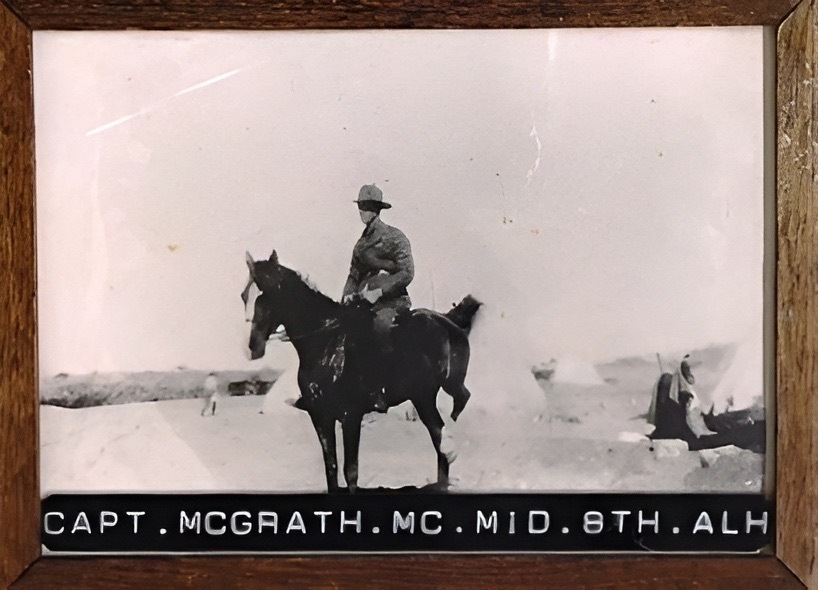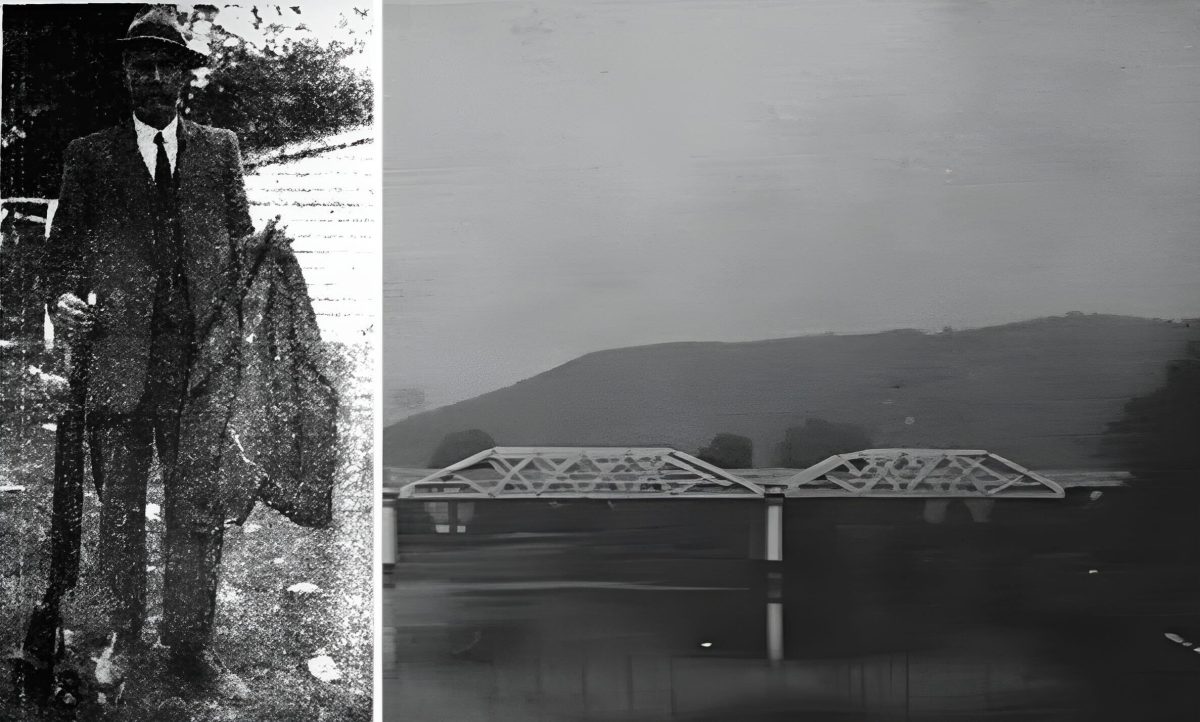
Claude Valentine Batson was obsessed with ”dime novels” and tales of cowboys and gangsters. Photo: Chris Roe.
While the capture of Ned Kelly in 1880 is generally thought to have brought the era of bushrangers to a close, there was still the occasional bushman keen to follow in their bloody footsteps well into the 20th century.
In 1924, Claude Valentine Batson briefly held the Riverina to ransom after opening fire on a group of picnickers at Jingellic, down near the Murray.
Nicknamed ”The Albury Bushranger” and ”The Jingellic Sniper” by excited newspaper editors, Batson managed to evade capture by scores of police and volunteers for six days.
Twenty-four-year-old Batson was described as an awkward loner who loved paperback westerns and violent crime novels and spent much of his time hunting and shooting. He was an active member of the Walwa Rifle Club and was considered to be an expert marksman and bushman.
About 1923, Batson sank into a deep depression after a former friend stole his idea for a rabbit poison and he was dumped by his fiancee.

A Lee Enfield .303 similar to the one used by Claude Valentine Batson. It was the standard-issue rifle for Australian forces during WW1 and was manufactured at the Lithgow Small Arms Factory. Photo: Gold Coast Armory.
On the afternoon of Sunday, 10 February, 1924, a group of seven friends decided to escape the heat and picnic at a shady spot by a bend in the Jingellic Creek.
As dairy farmer Charles Barber set out to join the party, he paused to chat to his employee, Claude Batson, who told him he was off to hunt foxes for the afternoon.
Soon after, another local met the heavily armed Batson on the nearby bridge across the Murray, where he was returning from the Walwa Rifle Club.
“Where are you going, Claude? For a month’s shooting?” he asked, noting that Batson was carrying a .303 service rifle, had a bandolier of cartridges slung across his chest and his coat pockets were stuffed with yet more ammunition.
Another lad, named Bill Spicer, encountered Batson in the scrub filling his bandolier with cartridges.
“I think I’ll do a bit of bushranging, Bill,” the young dairy worker said casually.
A short time later, as the picnickers boiled a billy under the shade of a willow, a rifle shot rang out from across the creek and 60-year-old tobacco farmer Richard King was hit in the chest and pitched forward.
A second shot struck Charles Gainor in the leg, breaking the bone, and two of the men caught sight of a figure in a black hat and dark coat concealed by brambles on the other side of the creek.
A string of shots followed in quick succession and David Shepherd, who managed the local butter factory, crashed down among the teacups with a mortal wound.
As the remaining picnickers scrambled for cover, they recognised the sniper as Claude Batson, standing across the water and calmly reloading.

The brave William ”Lauchie” McGrath, who joined the Light Horse in 1914 and rose through the ranks in WW1. Photo: Victorian Collections.
As the bullets continued to fly, Barber took the opportunity to head for his horse to get help while decorated war veteran Major William McGrath made a break for his nearby house and the .303 rifle he kept there.
He figured that with two of the party heading in separate directions, Batson would only have time to get off a few shots as McGrath covered the 200 metres to his home.
However, the renowned marksman rattled off more than a dozen rounds at the runner, kicking up gouts of dust and hitting the major twice in the back, in his right thigh, left elbow and wrist.
Despite his wounds, the heroic McGrath retrieved his rifle and crawled back to the creek, but by the time he arrived, the gunman was nowhere to be seen.
As the story quickly began to spread, dozens of police and volunteers on horseback were mobilised and began to systematically scour the bush.
The following day, Batson bailed up two sisters on a cart and forced them to take him to their home.
After sheltering overnight, he was surprised by the arrival of the police and bolted out the back door, into an orchard.
When police spotted him and called for him to surrender, the outlaw turned and opened fire.
Two Tumbarumba policemen gave chase and during the running firefight, Sergeant Morris shot Batson’s hat off his head with his revolver and a second shot put a hole in his coat sleeve as he escaped into the scrub.

A policeman shows Baston’s coat and rifle, recovered after the sniper swam across the Murray to avoid pursuers. Photo: HeraldSun/Trove.
David Shepherd had by now died in hospital and Batson was wanted for murder. Police redoubled their efforts, bringing in dozens more troops from both sides of the border along with Aboriginal trackers, and even armed the reporters who had come to cover the manhunt.
The wily bushman continued to evade his pursuers but was forced to abandon his weapons and ammunition as he stripped off and swam across the Murray River.
Naked, unarmed and injured, Batson sought supplies and clothes from Charles Barber’s farm and helped himself to a watermelon he found in the kitchen.
“I’m sorry I fired on those people, but I was wild at the time,” Batson told fellow dairy worker Percy Emmerson, who had spotted him limping into the farm.
After retrieving a bottle of whiskey, the aspiring bushranger sat down and wrote a suicide note addressed to his estranged mother.
“C. Batson has taken a dose of cyanide. It tastes lovely too,” it read before describing the location of his rifle and bidding his mother “Good-bye”.
The note was a ruse to throw off the police and the fugitive headed back into the bush in bare feet.
On 15 February, Batson staggered into a dairy and begged for a cup of milk from the two young men working there.
When they grabbed him by the arms and told him to give up, he was too weak to resist and was soon delivered to the police.
Despite being charged with one count of murder and three of wounding with intent to kill, he was deemed medically unfit to face trial and was committed to an institution instead.
Original Article published by Chris Roe on Region Riverina.







